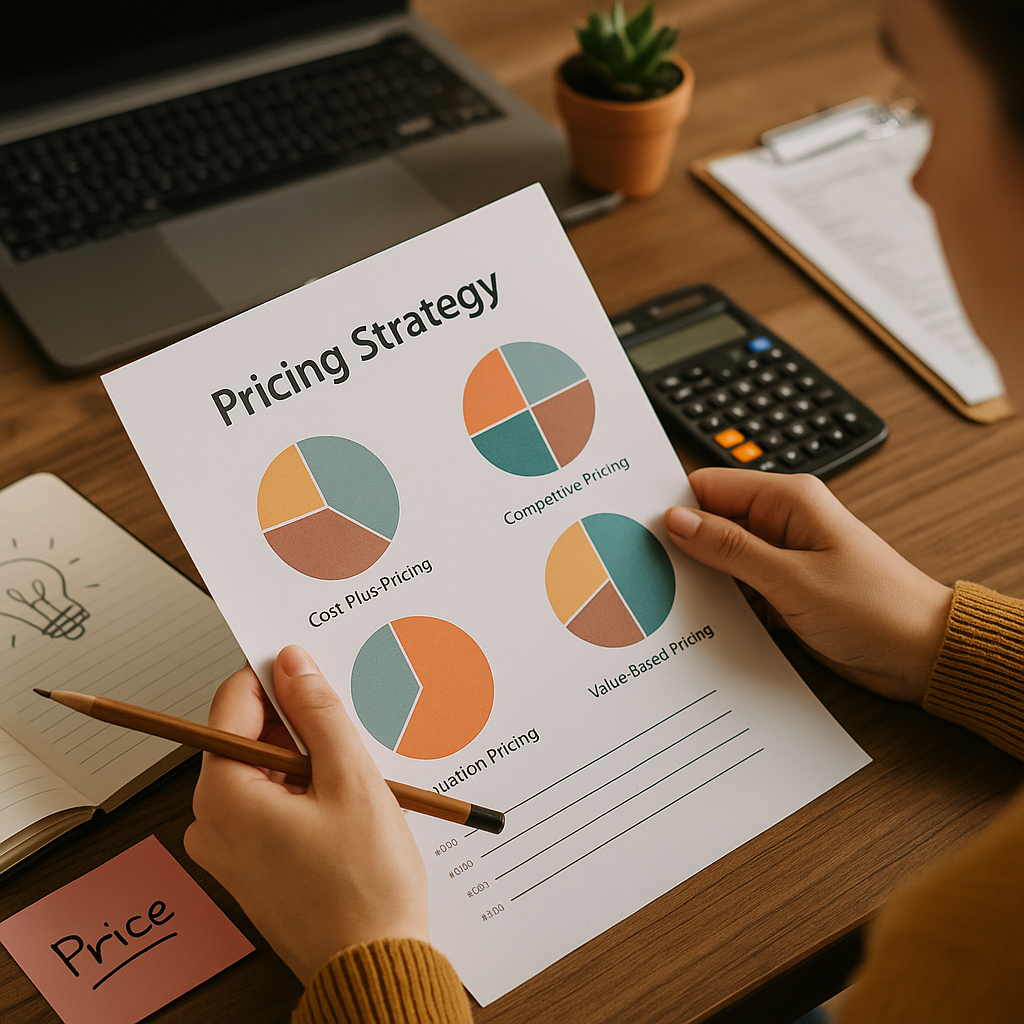Pricing is one of the most important decisions a small business owner will make—and one of the hardest. Charge too much and you risk scaring away customers. Charge too little and you hurt your profits (and your credibility). The key is to find a balance between customer expectations, market demand, and your business needs.
This guide will help you understand how to price your products or services with confidence, strategy, and purpose.
Why Pricing Matters More Than You Think
Price is not just a number—it communicates value, positioning, and trust.
The right pricing helps you:
- Cover your costs and make a healthy profit
- Attract the right customers
- Compete without undervaluing yourself
- Build a sustainable business
Many new entrepreneurs start with emotional pricing (what feels right) or reactive pricing (copying others). Let’s do better than that.
Step 1: Understand All Your Costs
Before setting a price, you must know exactly what it costs you to deliver your product or service.
For physical products, include:
- Materials
- Packaging
- Shipping
- Labor (your time counts too!)
- Transaction fees
- Marketing and overhead (like software or rent)
For services, include:
- Time spent (actual work, communication, admin)
- Software or tools used
- Taxes and transaction fees
- Education or licensing (if applicable)
Create a spreadsheet listing every expense, even the small ones. This is your cost base—and you must charge above it.
Step 2: Know Your Break-Even Point
Your break-even point is when your income equals your expenses. Knowing this helps you determine:
- The minimum you must charge
- How many sales you need to reach profitability
Use this simple formula:
Break-Even Price = Total Costs / Number of Units or Hours
If it costs you $300/month to operate and you plan to sell 30 items, your break-even price is $10. Anything above that is profit.
Step 3: Research Your Market
Now look outward. What are others in your niche charging?
- Look at competitors’ websites and pricing pages
- Read customer reviews to understand what they value
- Check if higher prices come with better quality, branding, or service
You’re not trying to copy them—you’re finding your position. Are you the budget option, mid-range, or premium?
Tip: Avoid being the cheapest. Competing on price alone leads to burnout and devalues your work.
Step 4: Choose a Pricing Strategy
There are many pricing methods. Here are some effective ones for small businesses:
1. Cost-Plus Pricing
Add a fixed percentage markup to your costs.
Example: Cost = $10, markup = 50%, price = $15.
2. Value-Based Pricing
Price based on the value you provide to the customer.
Example: A productivity app that saves hours each week can charge more than its cost to build.
3. Tiered Pricing
Offer different levels or packages to match different budgets.
Example: Basic, Standard, and Premium services.
4. Psychological Pricing
Use pricing techniques like $9.99 instead of $10 or bundling items together.
Choose a strategy that fits your brand, audience, and profit goals.
Step 5: Test and Adjust
Pricing is not permanent. It’s perfectly okay to experiment until you find what works.
How to test:
- Create A/B offers with different prices
- Offer a discount temporarily and measure demand
- Ask for customer feedback on perceived value
Track your results: Which price gets more conversions? Which generates the most profit? Sometimes fewer customers at a higher price is more profitable.
Step 6: Don’t Forget to Factor in Taxes and Fees
If you collect taxes or pay processing fees, include those in your pricing structure.
Examples:
- PayPal or Stripe may charge 2.9% + $0.30 per transaction
- Your local government may require sales tax to be collected
Build this into your price so it doesn’t eat into your profits unexpectedly.
Step 7: Price With Confidence
How you feel about your price affects how you sell it. If you’re unsure or apologetic, customers will notice.
- Believe in the value you offer
- Practice saying your price aloud until it feels natural
- Explain the benefits and results of your product or service
Confidence builds trust—and trust drives sales.
Step 8: Offer Discounts Strategically
Discounts can drive sales—but used poorly, they can damage your brand.
Best practices:
- Use discounts for specific purposes (launching, clearing inventory, or rewarding loyal clients)
- Always show the original price to highlight the value
- Avoid permanent discounts or always-on sales—it trains customers to wait
Alternatives to discounts:
- Add a free bonus
- Offer bundles
- Give early access or exclusive content
These preserve your pricing power while still creating urgency.
Step 9: Review Your Prices Regularly
Markets change. Your skills grow. Your costs rise.
Revisit your pricing every 6 to 12 months. Ask:
- Am I still profitable?
- Has my value increased?
- Are competitors changing their prices?
Raising your prices is natural—especially if you’re providing better results or experiences. Don’t be afraid to evolve.
Final Thoughts: Pricing Is an Ongoing Process
There’s no perfect price—but there is a strategic one. Your pricing should reflect the value you provide, not just the cost of creation. Start with a clear understanding of your numbers, test with real customers, and adjust as your business grows.
Remember: You’re not just selling a product—you’re selling a result, a solution, and an experience. Price it accordingly.
